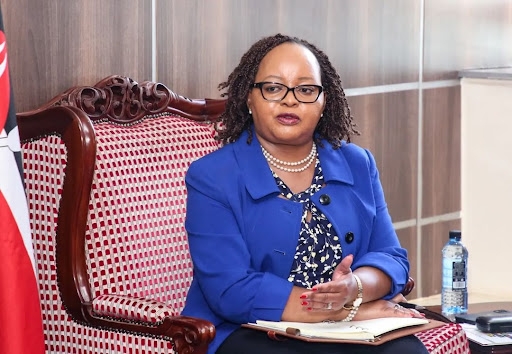Persons with disability constitute 15 per cent of the world’s population, with 80 per cent in low and middle-income countries.
The World Health Organization notes that the prevalence of disability is increasing and disproportionately affects poor and marginalized communities as a result of ageing populations and the global increase in non-communicable diseases.
In Kenya, 13 per cent of people live with at least one form of disability.
The United Nations Convention on the Rights of Persons with Disabilities, ratified by Kenya, guarantees persons with disabilities the same level of right to access quality and affordable healthcare.
This includes sexual and reproductive healthcare services echoed by Article 43 (1) (a) of the constitution which state that every person has the right to the highest attainable standard of health including the right to health care services and reproductive health care.
Despite the existing legal and policy frameworks, persons with disability still struggle to access health services.
Moreover, even in our country where laws exist to reduce inequalities in access to services, most reports show that compliance is still low.
This access includes physical access to places where services are offered.
In most of the low middle-income countries, maternal health care services have been structured to meet the needs of able-bodied women, neglecting the special maternity care needs of women with walking disabilities.
This multiplies the barriers experienced by this marginalized category of women and makes them more susceptible to maternal morbidity and mortality.
Most efforts to improve maternal health outcomes in Kenya have focused on improving access and quality of care for women, without regard for the special needs of marginalized populations such as teenage mothers and women living with disabilities.
In sub-Saharan Africa, maternal mortality currently stands at 546 maternal deaths per 100,000 live births.
Consequently, many Sub-Saharan Africa countries have a steep road towards aching sustainable development goals to improve maternal mortality by less than 70 maternal deaths per 100,000 live births by 2030.
Kenya has made great strides in reducing its maternal mortality rate from 438 deaths per 100,000 live births registered in the 2011 Kenya Health Information Survey Report to the current 336 deaths per 100,000 live births.
The progress is marked in improvement in pregnant women attending four or more antenatal care visits.
Most efforts to improve maternal health outcomes in Kenya have focused on improving access and quality of care for women, without regard for the special needs of marginalized populations such as teenage mothers and women living with disabilities.
Advocacy needs to be done to marginalized populations to enhance their ability to demand better maternal health services and with policymakers to advance the government to commit to safe motherhood.
Women with disabilities have several needs that include psychosocial and personal needs, mobility-related needs and health facility-related needs.
More sensitization to counter the stigmatization and to educate citizens about the special needs of women living with disabilities should be undertaken, followed by advocacy that can encourage decision-makers to explore, innovate and put in place mechanisms to meet their special needs.
This sensitization should target families, communities, health care providers and policymakers.
This will enable them to understand the problems they face and the kinds of support they require.
Health care providers and policymakers should also dedicate more time and resources to providing training to health workers so that they can provide services that are responsive to the needs of women living with disabilities.
Policymakers and health care providers should take deliberate actions to provide appropriate infrastructure.
They should build facilities that are made disability-friendly by providing the required infrastructure such as ramps, assistive devices for climbing high beds and seats.
They can also explore expanding the target group for outreach services to include women with disabilities so that they can receive health services closer to their homes and thereby reduce arduous travel.
The Ministry of Health should broaden partnerships with NGO’s that can provide opportunities and equip them with skills to enable them to find employment or start small businesses to meet their personal needs.
It is thus noteworthy that the Sustainable Development Goals explicitly mention disability as part of Goal 10, which aims to reduce inequality and promote the inclusion of all.
The writer is a youth Advocate Reproductive Health Network Kenya
Edited by Kiilu Damaris











